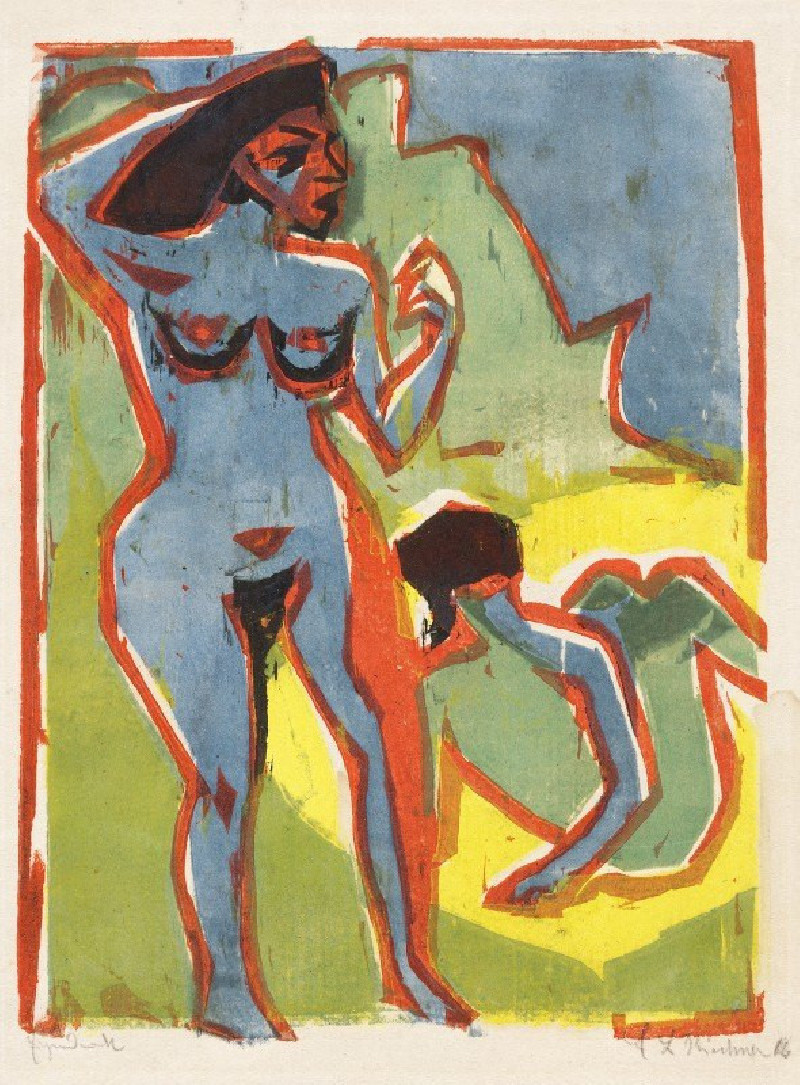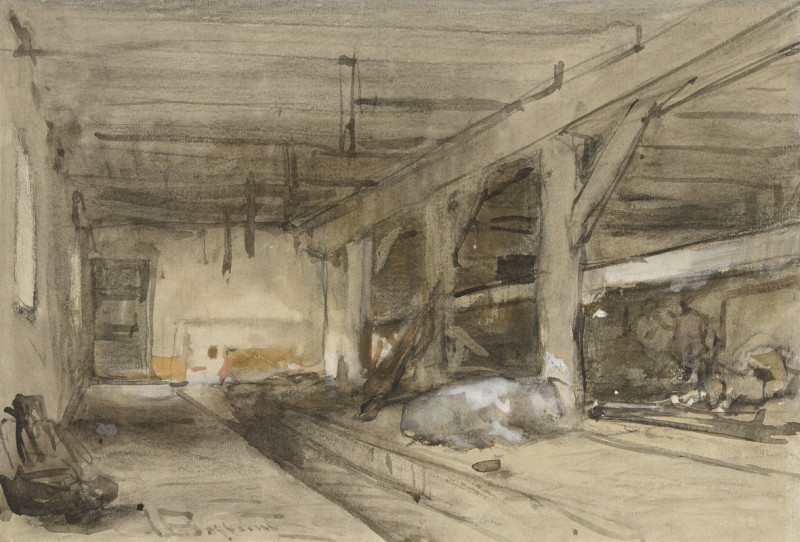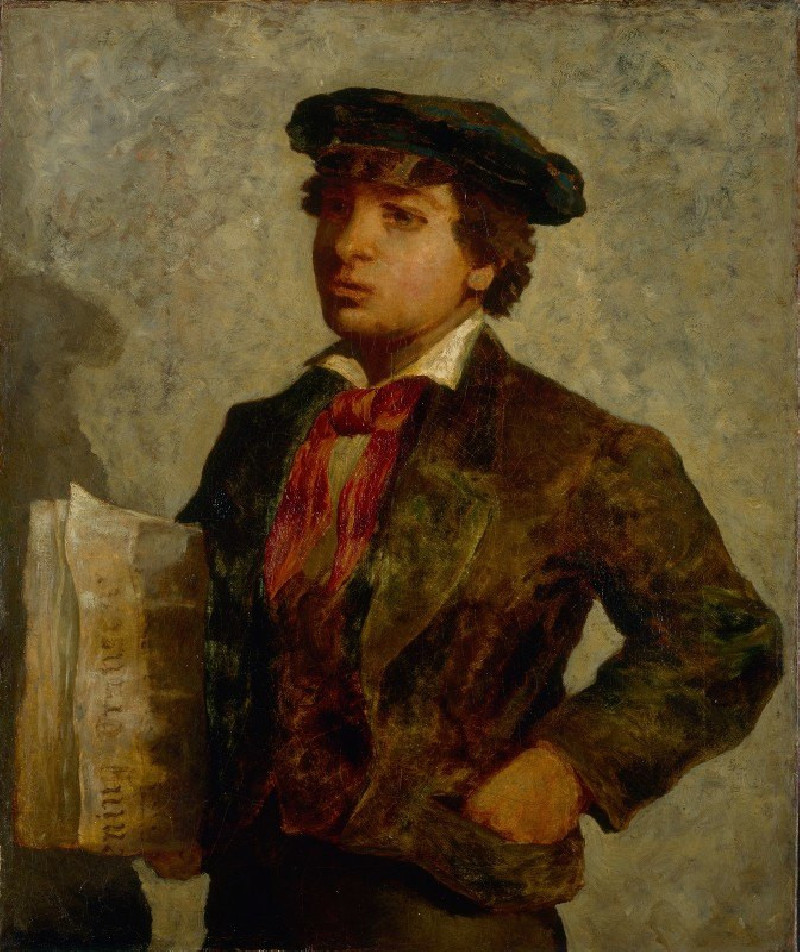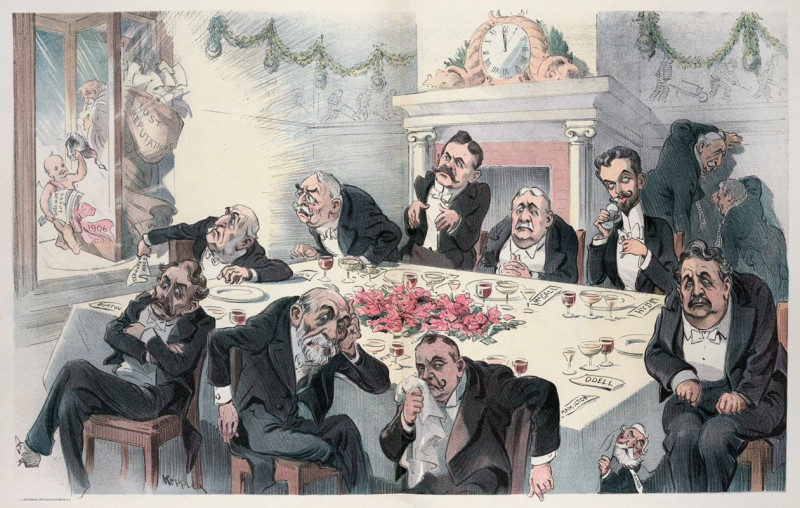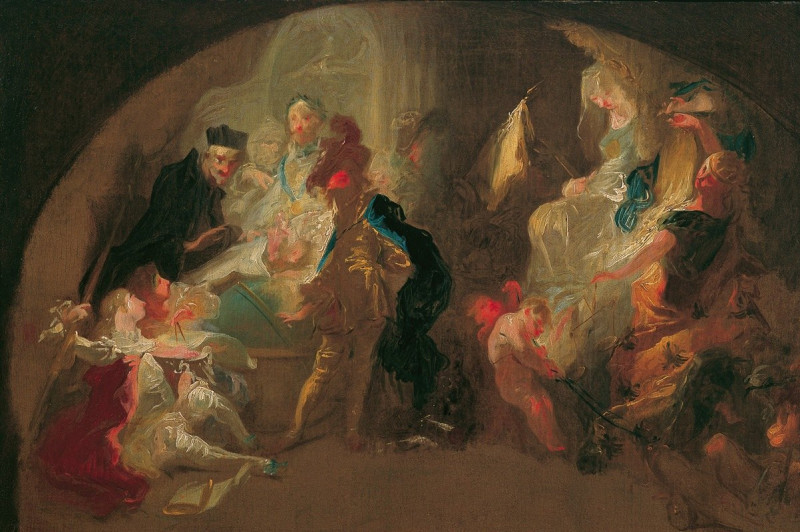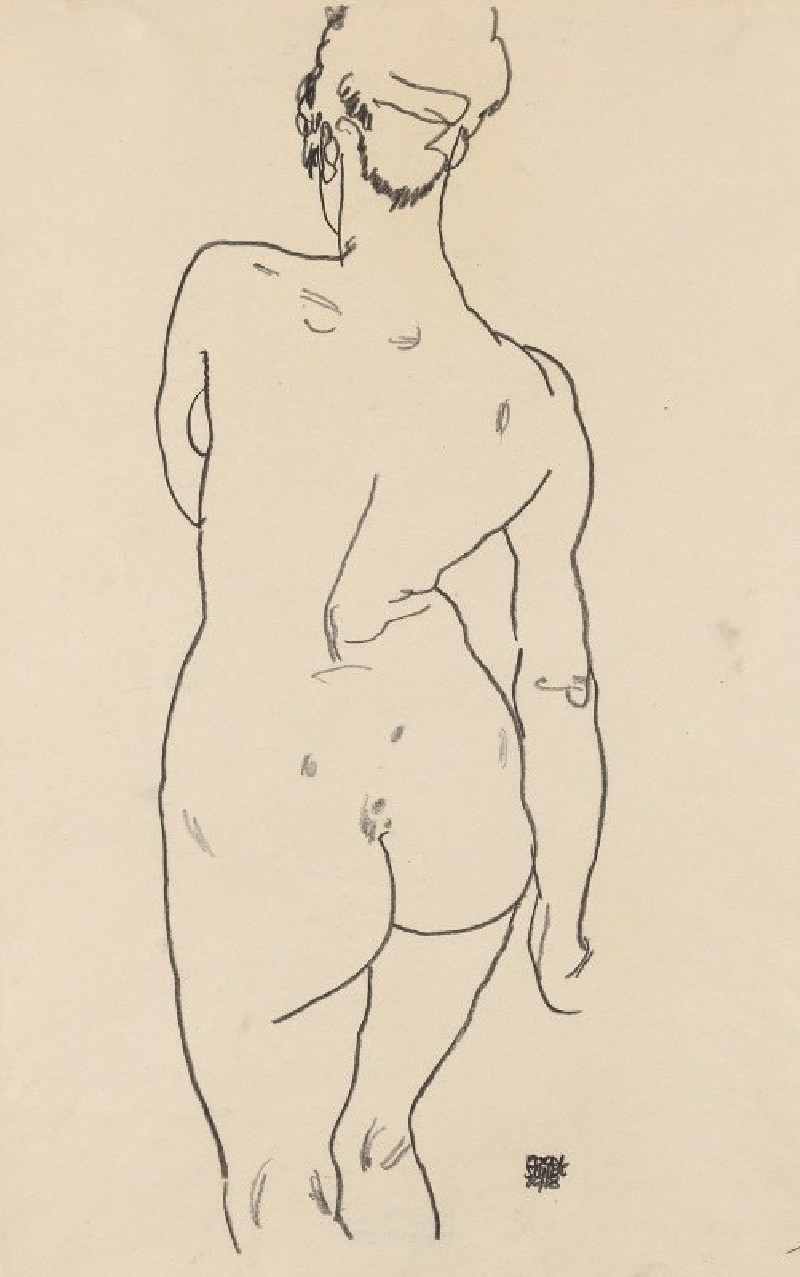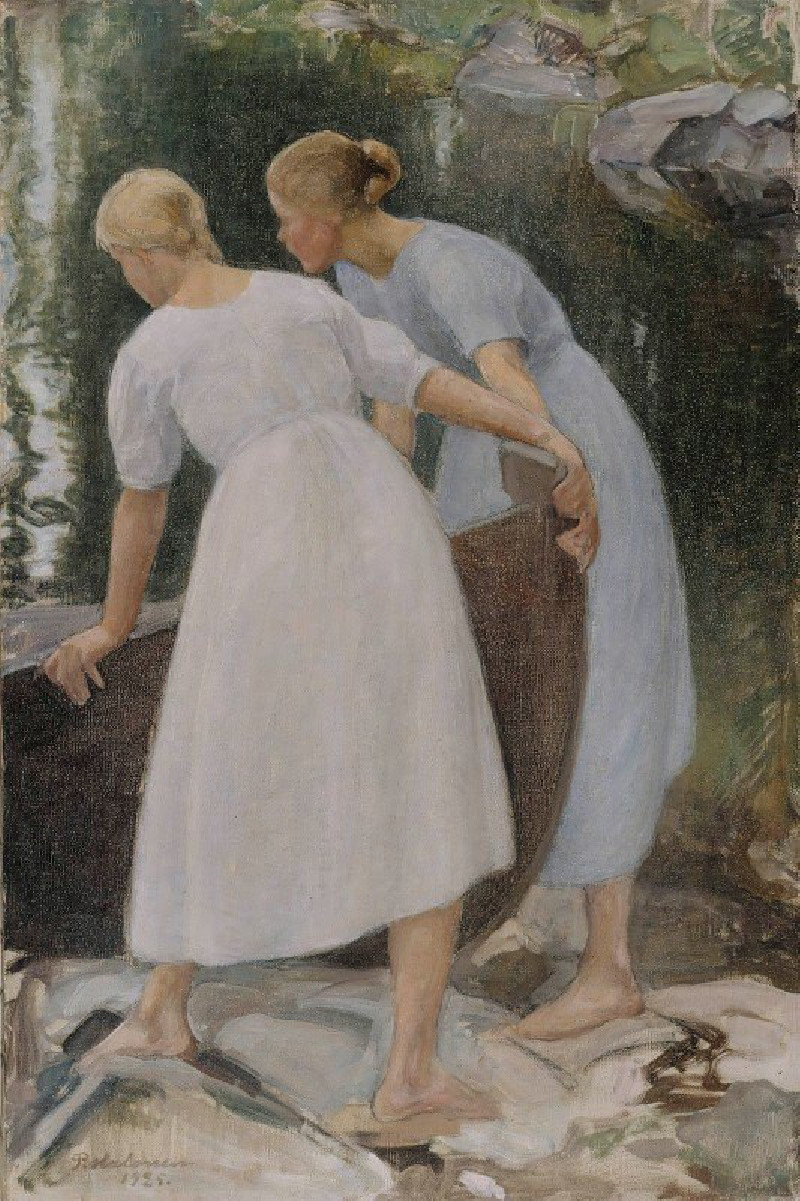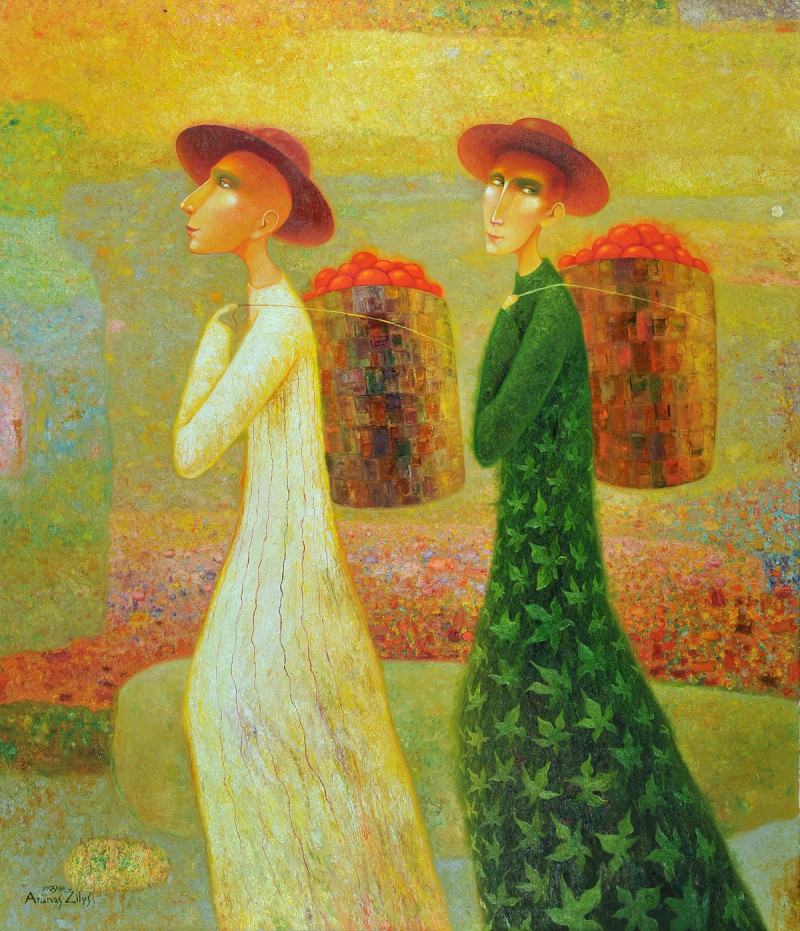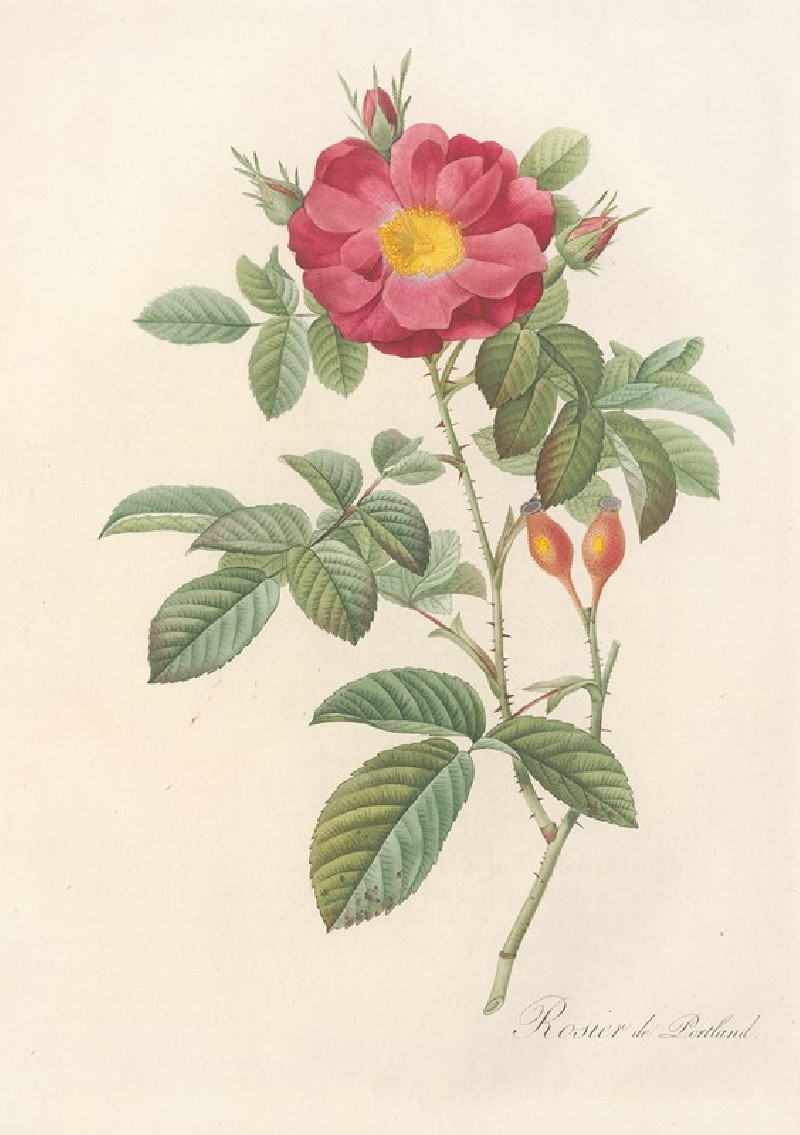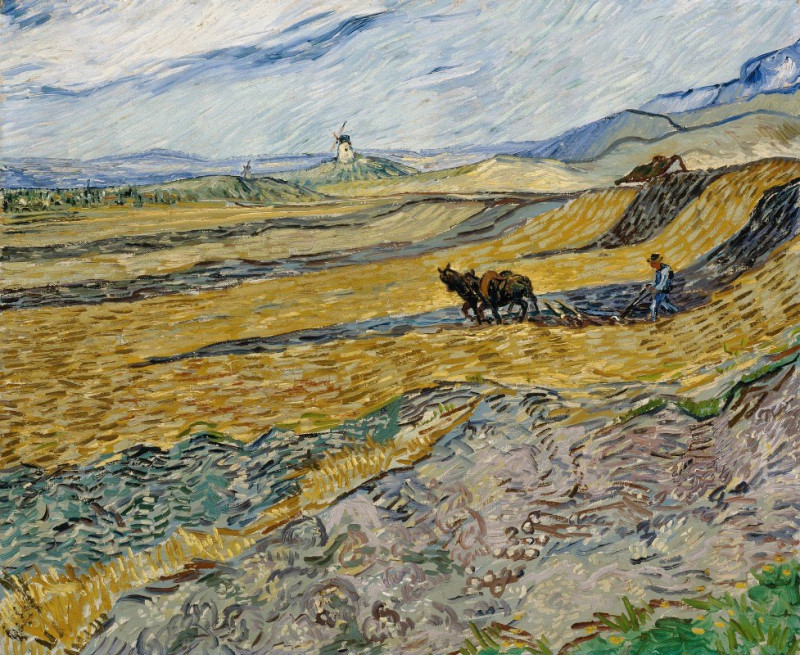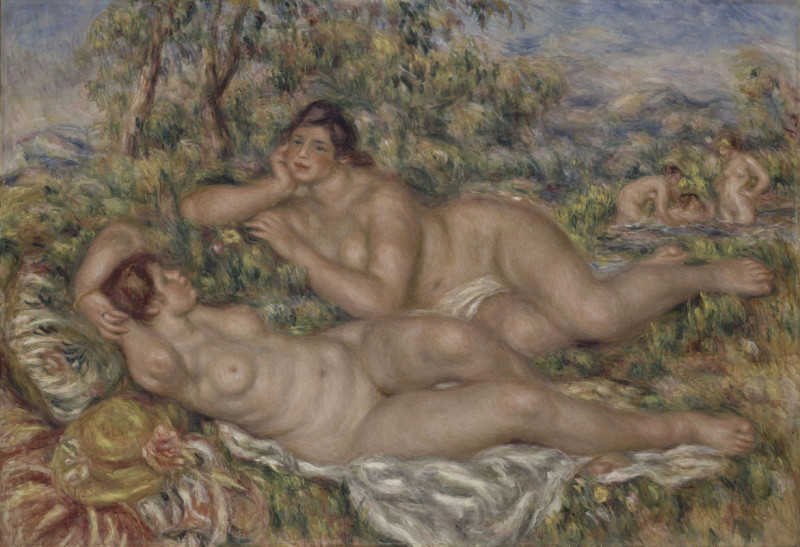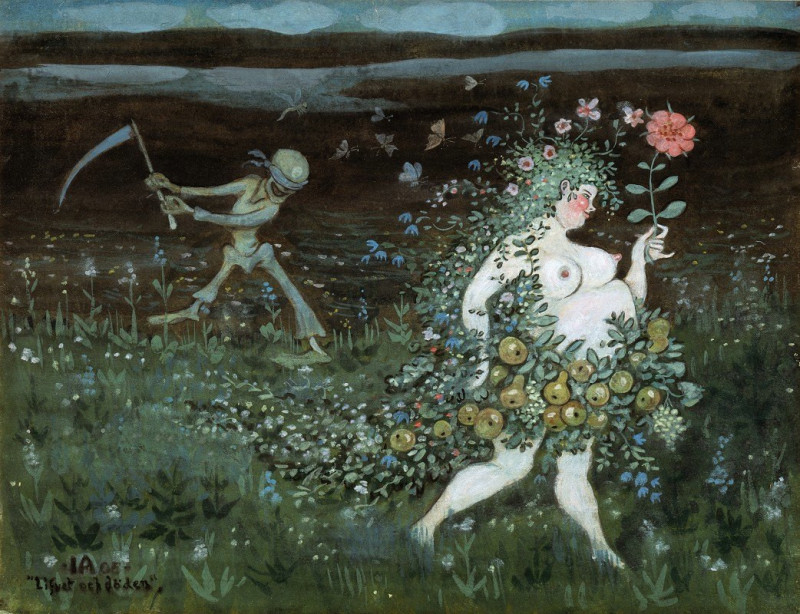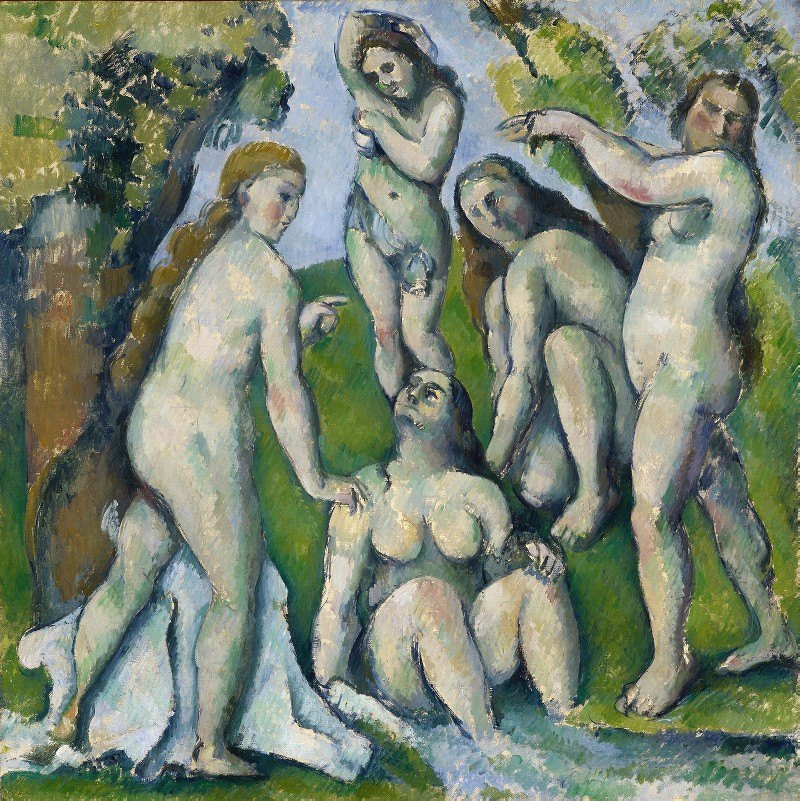Bathing Women (Moritzburg) (1909)
Technique: Giclée quality print
Recommended by our customers
More about this artwork
Welcome to a vibrant exploration of form and color in Ernst Ludwig Kirchner's 1909 painting "Bathing Women (Moritzburg)." This striking work, infused with bold, expressive hues and sharp contours, illustrates Kirchner’s unique approach to portraying human figures and natural landscapes.In this piece, two nude female figures are depicted amidst an abstracted landscape. Their bodies, rendered in striking shades of blue, stand out starkly against the vivid green and yellow background, suggesting the lushness of a natural setting. The shapes are simplified and the outlines are jagged, capturing a sense of raw, dynamic movement. Each figure is shown in a pose that suggests the act of bathing or moving through water, which might be implied by the fluid forms and undulating lines that suggest ripples or waves.Kirchner's approach is not just significant for its aesthetic innovation, but it also speaks to a deeper engagement with themes of naturism and freedom, central to many avant-garde movements of the early 20th century. This painting does more than depict a scene; it evokes emotions and an atmosphere, challenging traditional representations of the body and nature in art."Bathing Women (Moritzburg)" serves as a fascinating example of Kirchner's development towards Expressionism, marking his move away from realism towards a more emotive, powerful use of color and shape to capture the essence of his subjects.
Delivery
Returns
Ernst Ludwig Kirchner (1880–1938) was one of the most important German Expressionist painters. He was a co-founder of Die Brücke, a group of German expressionist artists formed in Dresden in 1905. Die Brücke and Kirchner took inspiration from Vincent Van Gogh and Edvard Munch, as well as African and Oceanic art. They used woodblock printing as a medium to showcase their signature style: flat, unrealistic images with vivid colors. The recurring themes in Kirchner's artworks included exotic cultures, faraway landscapes, self-portraits, dancers and Berlin street life. His paintings and prints effectively portrayed non-European cultures despite the fact that he never traveled outside of Europe.

